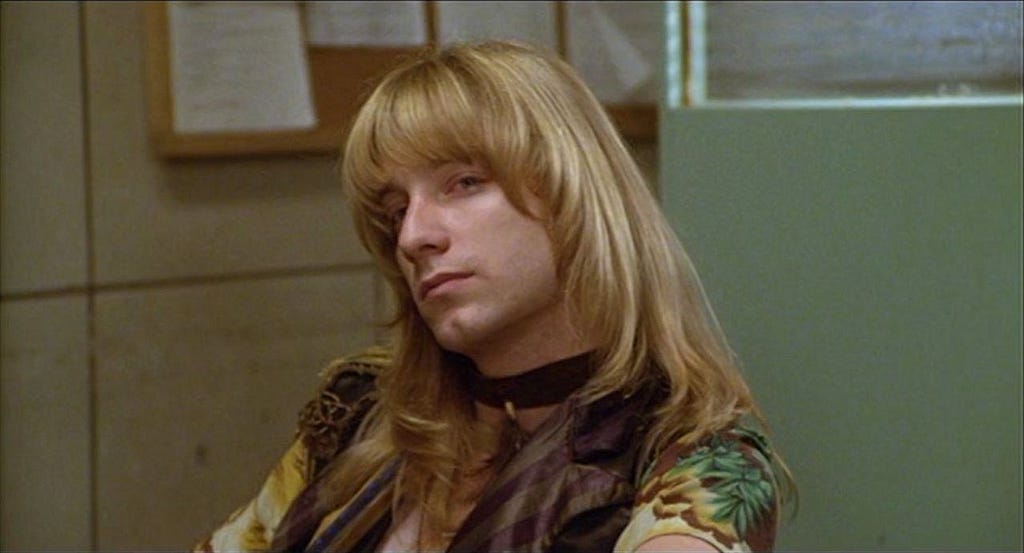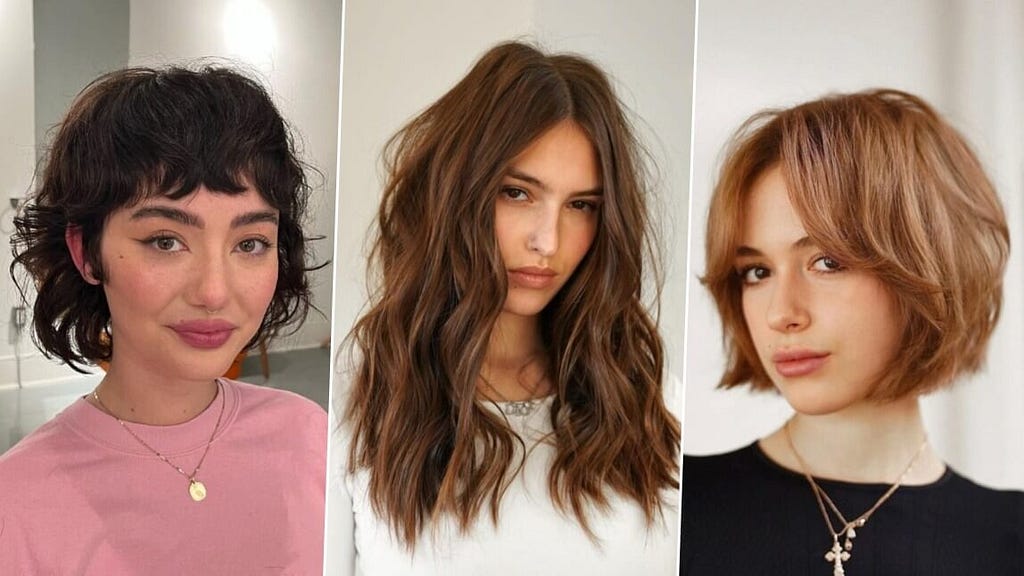Wispy bangs and that little bit of extra texture in your content design org

Hair has always been big for me. Not just because my favorite movie is the musical movie ‘Hair’ from 1979 but also because I’ve always considered my usually a-little-bit-too-long and a-little-bit-too-messy mane a statement against conformity — some of my proudest teenage moments were my mom complaining I needed to brush my hair or get a haircut. Oh sweet, sweet young adult anarchy, I miss you.
Well, I recently got a trim — never more than a centimeter or two, of course — and was chatting to my dedicated hairdresser (shoutout to Giovanni) about this year’s hair trends.
He explained that the past couple of years have been focused on embracing natural texture and no-fuss hairstyles, with the occasional wolf-cut or colorful shag trending in between. Before that, we’d seen a few years of more standout cuts, extreme bleach, and bold colors.
This year pushed natural even further by embracing low-maintenance styling and layered, statement-making cuts that do all the work and call back to past eras and decades. Think Miley Cyrus at the Grammy’s, clean-cut bobs or long textured hair with wispy bangs alla Dakota Johnson.
In short, his customers were coming in to grow out their artificial colors and achieve a more healthy mane that’s easy to care for.

A light bulb moment.
These trends almost directly translated to the shift I’d been experiencing working in content design over the last decade or so.
The bold years are over — we’re building content design orgs that can stand the test of time and are a little more low-maintenance.
Keyword: Low maintenance layers
It’s less about flashy tone and voice guidelines we’re forcing the whole company to adopt, and more about finding consistency that can easily scale across products and complement a brand we’ve carefully crafted with actual humans in mind — a little less quirky maybe, a little more easy-to-maintain. And a look at content design as a whole instead of just the obvious microcopy, creates a delightful, layered, experience.
For example, we achieve this by focusing on:
- working with instead of around AI, and especially using it to help with pesky tasks (I’m thinking for writing briefs and initial ideation)
- finding ways to build frameworks (e.g. for notifications or naming) that can easily be integrated into design systems instead of hosting a bunch of guidelines somewhere no one goes anyway
- getting everyone else to understand the importance of microcopy and training them in the basics so we can fry bigger fish, like IA (information architecture) or taxonomy
Keyword: A healthy mane
When companies make their first content design hires, they are often met with a long backlog of projects and high demands for establishing the discipline from scratch. And while this is often very much pushing the boundaries of what’s possible, I’ve seen some stellar content designers actually succeed.
This success, however, is often built on the strength and resilience of a few individuals. The entire content design org might collapse if they leave or there are leadership changes. This is not healthy.
So how do we heal it? Some ideas:
- We create transparent plans for establishing (or scaling) content design leadership can sign off on and then we stick to them
- Our to-do list is transparent. Tasks that go beyond our planning or capacity are declined (yes, do it!)
- We closely collaborate with a design systems team to get content guidelines and principles translated into components — to make us less dependent on individuals reading guidelines
- Content designers have clear areas of expertise so we can distribute work fairly
- There’s a lead whose job is to lead and take the load of advocacy, educating, and discipline-forwarding work off the plates of everyone else
Keyword: Our natural colors
One thing I love about working in content design is the people.
Content designers have all kinds of (weird and wispy) backgrounds. I’ve talked to content designers with backgrounds in journalism or marketing, as well as those who come from engineering or teaching.
I’ve always thought there’s great value in there not being a cookie-cutter content design career trajectory. The different mindsets and ways of working lead to a very special type of problem-solving that I think is quite unique to our industry.
While during the hypergrowth of the pandemic, many pushed toward larger teams, clear standards, and best practices, I’ve found myself almost a little intrigued by the chaos of the last couple of years where smaller teams have been forced to make it work with new tools and wild demands.
Of course, I don’t encourage layoffs or individuals being faced with unrealistic demands for their craft. But I do believe this change has shifted our field to be a bit more careful with how we spend our resources and what we go all in on, while also focusing more on showing impact (at the right time, to the right people). And that has certainly benefited us. Teams seem to be growing again! And more companies are bringing on content design leads to help scale. Great!
I believe one of the reasons we’ve been good at facing the adversity and changes of the last few years is because of how diverse we are. So let's let those natural colors continue to shine.
Well, that was a weird post to write but I kind of really enjoyed it? I hope you got some energy from it and hey, if you want to read more stuff by me on content design and many other things, stick around or follow me somewhere.
Nicole is a Content Design Lead and host of the Content Rookie pod. She lives in Sweden, where she writes poetry and chases her 1-year-old around her clover lawn. Website. Twitter.
![]()
How this year’s hair trends translate to the state of content design was originally published in UX Collective on Medium, where people are continuing the conversation by highlighting and responding to this story.